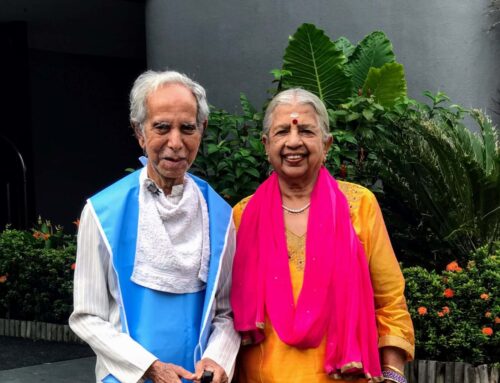Indian aviation must be a viable business to really take off
Shoba Narayan
Last Updated: Apr 2, 2011
Which is the best airport in the world?
For the past 10 years, Singapore’s Changi Airport and Hong Kong International Airport have alternated the top slot in the Skytrax World Airport Awards, although Seoul’s Incheon International Airport has recently challenged their reign, winning in 2009 and coming second last year.
Most of the world’s best airports are now in Asia and the Middle East, according to the Skytrax airport star ranking. Not a single US airport made the five, four or three-star categories.
India is among the least penetrated airport markets, something GMR Group, which is based in Bangalore and operates in the airports, energy and infrastructure sectors, hopes to change. Last week, at the GMR Aviation Security Summit held in Hyderabad, VP Agrawal, the chairman of the Airports Authority of India, said he expected Indian airports to handle 280 million people by 2020.
India is in the midst of an aviation shake-up. Thirty-five greenfield airports (new airports built from scratch, particularly where an old airport is unable to keep up with demand), which were supposed to have been completed last year, are behind schedule — only 22 are finished with the rest, at various stages of construction.
In 2007, India invested about US$35 billion (Dh128.55bn) in the civil aviation sector to build airports that would conform to the regulations laid down by the International Civil Aviation Organisation that have less to do with size and more to do with efficiency. These specify that departing passengers ought to be able to complete all formalities within an hour and arriving passengers within 45 minutes. Indian is only now starting to meet those targets, mainly thanks to new airports in Bangalore, Hyderabad, Delhi and Mumbai. These greenfield projects are replacing older airports that have either been returned to the defence and aeronautics divisions or ceased operations. Others, such as those in Chennai and Cochin, are being upgraded and modernised. New airports are being constructed, both in smaller “Tier 2” cities, as they are called, and at the larger centers.
The reality is a bit more complicated. Airports are risky businesses in India. Airport developers such as the GMR Group, which constructed both the Delhi and Hyderabad facilities, have to liaise with no fewer than 58 government divisions, which all want a piece of the pie. Worldwide, non-aeronautical revenues from retail businesses, hotels, restaurants, maintenance repair and overhaul account for 60 per cent of an airport operator’s income, with the remaining 40 per cent coming from aircraft landing and parking charges. In India, it is the opposite. At Delhi airport non-aeronautical revenues make up only 20 per cent of revenues. Put it down to the famous Indian frugality. Indians simply don’t make impulse purchases as they travel through airports.
Hotels and other hospitality businesses do not yet exist at or near the newer Indian airports. The land around Bangalore’s airport is green, virgin territory with nary a Marriott or Ramada Inn in sight. As a result, Indian airport operators depend on airport taxes and development fees, paid by each departing passenger, to get back their initial investment.
Following pressure from airport operators who view that revenue model as risky, Yashwant Bhave, the Airport Economic Regulatory Authority (Aera) chairman, has stated his organisation would look into new tariff structures based on a capital-asset pricing model. Under this proposal, airport operators have to submit assets they want to be considered for the new tariff structure.
The flip side is that Aera wants airport operators to not include the price of the land on which the facilities are built in a bid to keep passenger fees and taxes down. The operators, in turn, say Aera’s method of capital-assets pricing will reduce their return on investment and is therefore unviable.
With no hotel or hospitality enterprise yet in sight serving the new airports, the authorities and operators are caught in a stalemate: how to recoup investments while keeping passenger fees reasonable enough to encourage traffic. The last thing Indian airports need is a dip in traffic given the country is in the midst of a building spree.
The other factor at play is that India has an excellent railway network and a population used to travelling by train. Indians, in other words, are value customers when it comes to taking flights. If prices become expensive, leisure passengers will take the train for a fraction of the cost. Unlike most western passengers, who value convenience and time, Indians are used to lengthy train journeys and the accompanying inconveniences. They are a hard sell for the aviation sector.
India must build new airports, yes, but equally importantly, it must figure out a viable economic structure that makes good business sense for airport developers, airport operators and the airline passengers. Only then will the Indian aviation sector really take off.
Shoba Narayan is a Bangalore-based journalist.




Thank you for the work you have done into the article, it helps clear up a few questions I had.